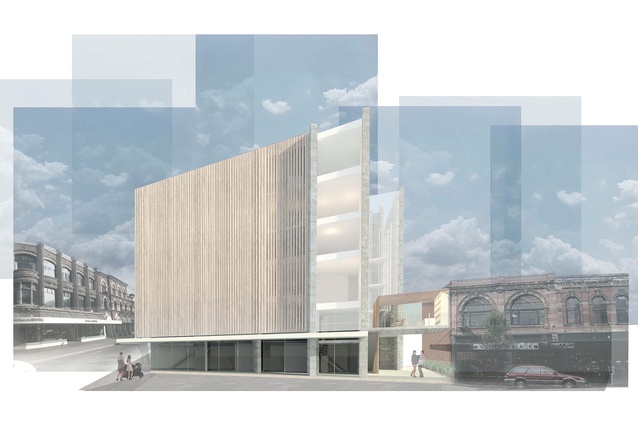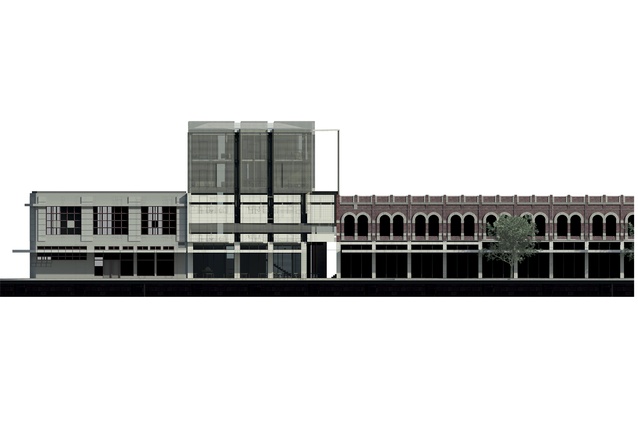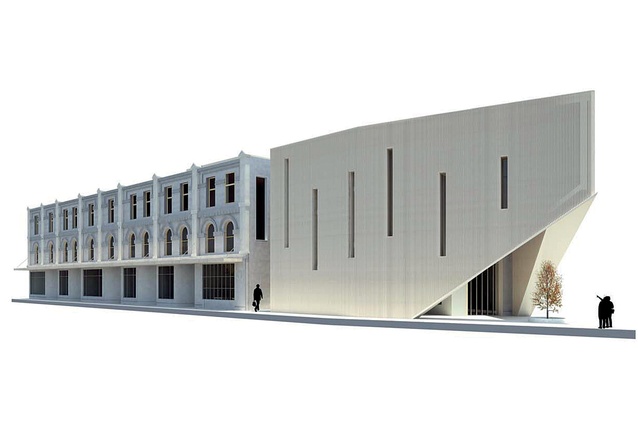The Past Awaits
Rebecca McLaughlan, an architect and PhD in Architecture student, expresses her concern “for the stories we are silencing within the rebuild and the consequences of its banality for future generations”.
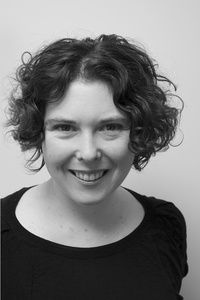
When Alice fell through the looking glass, she was faced with an uncanny sense of scale. Whenever I arrive back in Christchurch I feel the same way, except that it is not me that seems too big but the buildings. Friendly, familiar old New Regent Street looks suddenly uncomfortable in the shadows of a building recently erected on Gloucester Street, while, nearby, The Press headquarters towers over its heritage façade.
Yet, I can’t help feeling that neither of these genteel elders could feel as remotely intimidated as the quaint Art Deco building in Victoria Street does. It probably spends its days dreaming that it could run far, far away from its supersized neighbours. It isn’t just the scale that’s unnerving in Christchurch these days: there’s also an absence of articulation. The combination of these two factors sends a clear message to heritage everywhere: an earthquake is not the thing you ought to fear the most; it’s the fervent rebuilders that show up afterwards.
The Christchurch I grew up in was a coherent, legible city with a strong and reassuring sense of place. You knew at a glance what it stood for and from where it had come. The still largely 19th-century urban fabric linked us intimately with the city’s history. In his book on Benjamin Mountfort, Ian Lochhead reflected on the concern that settlers felt about raising a generation in “a country without a past”.
In 1868, Archdeacon Henry Harper wrote to a friend: “It seems to me that the rising generation will miss much. The historic imagination, in their case, will have next to nothing to feed on.” Mountfort himself shared in the belief espoused by British historian Thomas Macaulay that “a people that takes no pride in the noble achievements of its remotest ancestors will never achieve anything worth remembering.”
Christchurch’s story of settlement is by no means unique. I walk the campus at Melbourne University every day and it recounts a history not dissimilar to our own. Building after building contributes to the tale of a slow but admirable progression; what Peter Bevan used to describe as “building what you could as you could afford to build it”.
But this is also a story about colonial struggle: the sacrifice and dedication involved in carving out a place to exist on the underside of the world. Acknowledging the cultural implications of settlement, this is still a history that deserves our respect because it is the history that, for better or worse, defines our place in the world.
Much like Christchurch’s city centre used to, the Melbourne campus reminds me that I am part of something larger; it issues a daily challenge to contribute something meaningful. It may seem dramatic to suggest that the concerns that bothered Harper, Macaulay and Mountfort are, once again, applicable to Christchurch, but I am genuinely concerned for the stories we are silencing within the rebuild and the consequences of its banality for future generations.
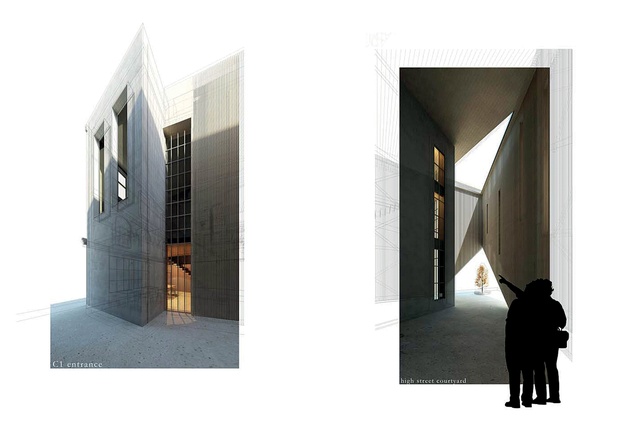
A rebuild that divorces us from our heritage is one we may live to regret. This was the premise taken up by 13 masters students in a studio titled ‘The Past Awaits’ (borrowed from the Vincent Ward book of the same name). In July 2011, in the wake of the February ’quake, before the bulldozers rolled in to erase the physical signs of devastation, and the pain, loss and uncertainty were palpable in a city still in shock, we took 60 fourth-year students from Victoria University of Wellington to Christchurch for a two-day introduction to our masters studio.
Five studios were on offer that semester: Ian Athfield and Mark Southcombe addressed the issues of intensification around Riccarton Mall, given its default role as a temporary city centre, Jules Maloney and Tane Moleta looked at new uses for red-zoned residential land through the lens of biculturalism, the paper run by Victoria Willocks looked at a new library and transport hub near the Square, and Martin Hanley’s studio explored temporary, community-focused interventions for the city. The paper taught by Melbourne architect Kerstin Thompson and myself posed the question of how to deal with heritage when that heritage was gone.
I will reflect on some of that work here as a means of critiquing current practice in Christchurch and in support of the suggestion that it is time for architects, planners and developers to lift our game in the rebuild; to recognise that we are not building a handful of individual projects but putting back a whole, and hopefully coherent, city for future generations to inherit. ‘The Past Awaits’ studio offers some useful lessons going forward.
We chose High Street as the focus of our studio because we wanted to respond to an area where its sense of place was in danger, an area to which residents exhibited a high emotional attachment and were openly distressed about its destruction. It isn’t so easy to recall these days, now that the spirit of High Street has begun to return, but we ran our studio at a time when the area’s stalwarts were still unsure whether they would make it back.
The newspapers reported that Fleur and Sam Crofskey of C1 Espresso café were considering Sydney or London as options, and Johnny Moore of Goodbye Blue Monday was looking at possible sites in Wellington. Many of the destination fashion boutiques, so central to High Street’s renaissance, had already shifted to Merivale or the new Colombo Street development.
There was also a sense that the artists and design professionals who had driven this renaissance had moved south as well, to occupy studio space alongside their former neighbours at the end of Colombo Street. The future of High Street was anything but assured. What was important to the students was that they preserve the character of High Street in the face of what we knew would be widespread demolition. Of course, even we could not have anticipated just how widespread this would be.

A group approach was taken to both the masterplanning and the detailed design of the wider precinct. Each of the 13 students was allocated a site yet expected to programme the area collectively; this resulted in a considered and complementary mix of uses that is not likely to occur using our current individualist, developer-driven model. But consultation also extended to setbacks for the neighbourhood and negotiating height limits. These were pre-negotiated as a group and, throughout the design process, progressively renegotiated with immediate neighbours.
This meant that buildings were designed to offer mutual benefits to each other and to the wider development, and additional height was traded for wider laneways – but, always, these were carefully tested to ensure that the laneways worked with regard to proportion, sunlight and safety. Students were open with each other about material selection and design aesthetics.
The studio understood that, in order to maintain a sense of coherence and to replicate the formerly rich urban streetscape, two or three strikingly contemporary buildings could be accommodated, although the remaining architecture would need to be of a more humble quality, beautifully articulated but not attention seeking.
To understand the scale and rhythm of High Street, the students began by documenting the street in elevation, starting with what was still standing, and adding, from photographs, what we could no longer see in front of us. What became apparent, from watching the students undertake this exercise, was how quickly one can develop an understanding of a street’s pre-existing condition, in terms of proportion and character, and how effortlessly that understanding then feeds into the design work that follows.
This allowed the group to propose new buildings that acknowledged and responded to the area’s scale and genius loci. Projects went higher and offered more density but they looked and felt like a logical progression of the city we had always known, not a senseless break from the past. This is not to suggest the process was always easy: one student spent days tweaking a single façade relative to its neighbours, painfully ensuring it was just right – it is exactly the reverence our surviving heritage fabric deserves.
Yet, this humble, respectful approach seems strangely beyond the skill-set of the city’s practitioners. The proposed development adjacent to the McKenzie & Willis façade makes evident that we are simply not having these conversations in the rebuild. This proposal makes no attempt to relate to the proportion or materiality of the existing façade. The floating horizontal planes of the roof and verandah relate to nothing at all and, therefore, compete with the original façade when it should quietly recede. In short, beside one of our few surviving heritage façades will be placed a design that, let’s be honest, would earn a C in the design studio.
The Press building, in particular, reminds one of the lamented approach to heritage that was common in Auckland in the 1980s. As students, in 1999, we interviewed a heritage planner from the Auckland City Council. Pointing to the dismembered façade of the Queen’s Head Hotel, floating amid a sea of curtain glass, the planner expressed relief that we’d come such a long way since the thinking that this was an appropriate response. It seems that Christchurch is still catching up.
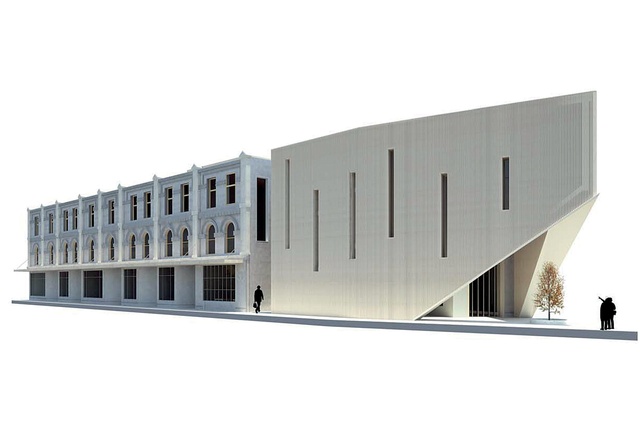
Even as you read this, Christchurch is becoming a city of glass and steel that will speak forever afterward of a single point in time. It is an architectural response that silences the stories of our city that came before 22 February 2011. I have tried to look for positives in this – perhaps Christchurch might become a present-day Glasgow. Instead of streets lined with façade after elaborate stone façade that speak of a 19th-century industrial heyday, Christchurch might become a vision of 21st-century modernity in steel and glass. Building after building might showcase the varied and beautiful ways in which these materials can be detailed.
It is a thought quickly rejected by a brief visual survey of the city. It is heartening, however, to find a rebuild project that does approach its predecessor in the same spirit as our studio. It is the Carlton Butchery in Victoria Street, designed by MAP Architects for developer Richard Diver. Although taller than the original, and contemporary in its materiality, MAP’s design evokes the memory of the original building. Although Peter Bevan would still have lamented the loss of softness from the street – the former chalky plaster façade with its slow-flaked patina that stood witness to the passage of time – the perforated steel screens, façade relief and deep entrances record the passage of the day, offering back to the street a different sort of softness.
In responding to High Street, our students investigated how heritage could be addressed in a contemporary way but with humility and respect. We spoke often of ‘quiet’ façades. Three of the 13 schemes provide useful alternative propositions on how to approach materiality in the rebuild.
For the former C1 Espresso site, Liam McRoberts proposed a timber structure that imitated both the depth of a masonry façade and the softness of its plaster render. Jono Hay investigated the articulation of modern building materials – steel, mesh and GRC panels – to extend the rhythm of the façades that sandwiched his site. A scheme that really encapsulated the notion of a quiet façade was that proposed by Peggy Russell.
Acknowledging the persuasiveness of a competent render and the challenges that would be encountered translating this studio project into built form, there is nonetheless a calmness and humility evoked in Russell’s project that, as a proposition for rebuilding in Christchurch, is highly seductive.
‘The Past Awaits’ studio can offer us lessons in engagement, as well as respect for heritage, architectural humility and compromise. The buildings we propose today will shape the collective identity of our city and those who inhabit it for decades to come. To put back a city with a coherent sense of place takes a critical mass of projects. As architects, planners and developers, these are the conversations we need to have, and we need to have them now before the opportunity is lost.

